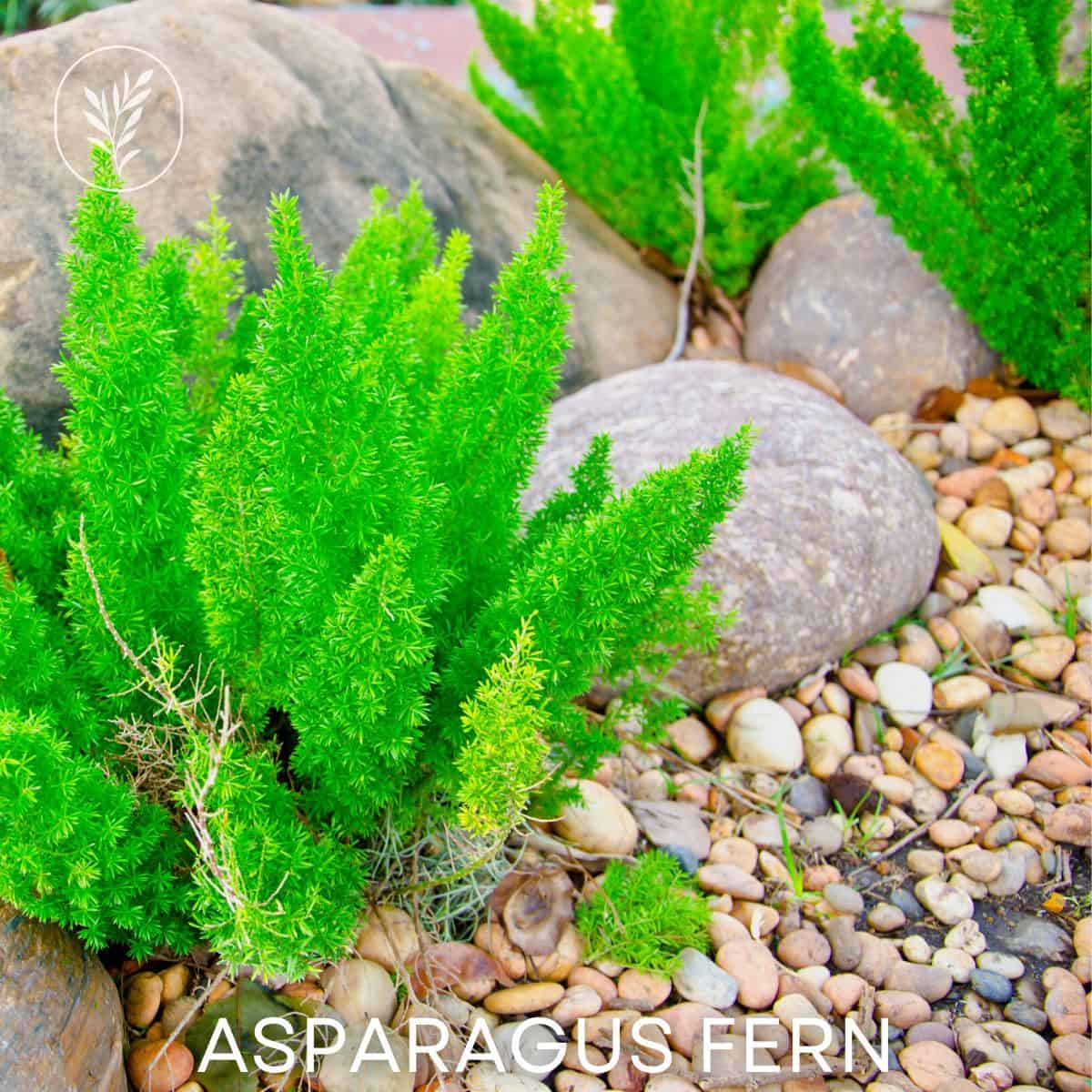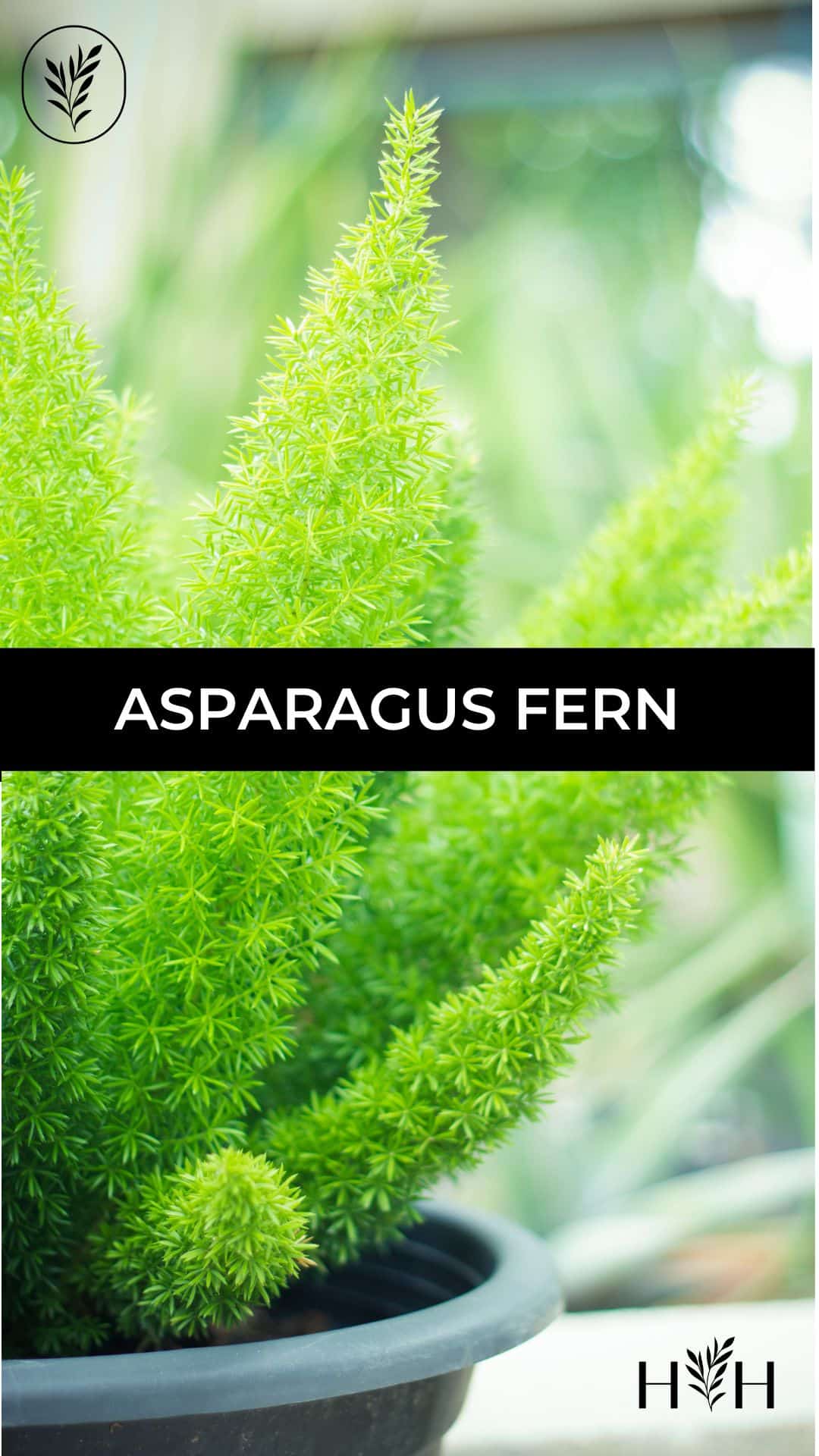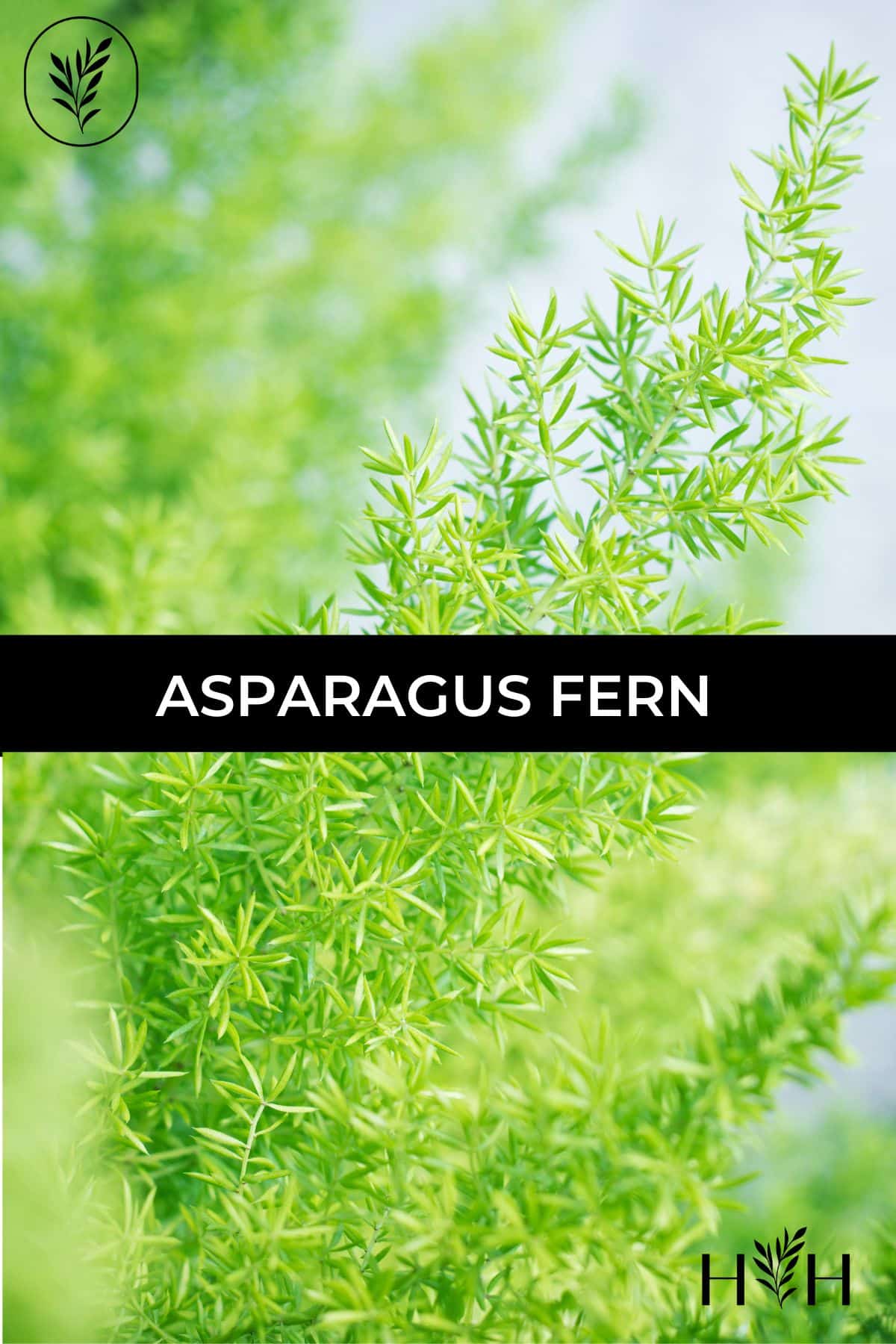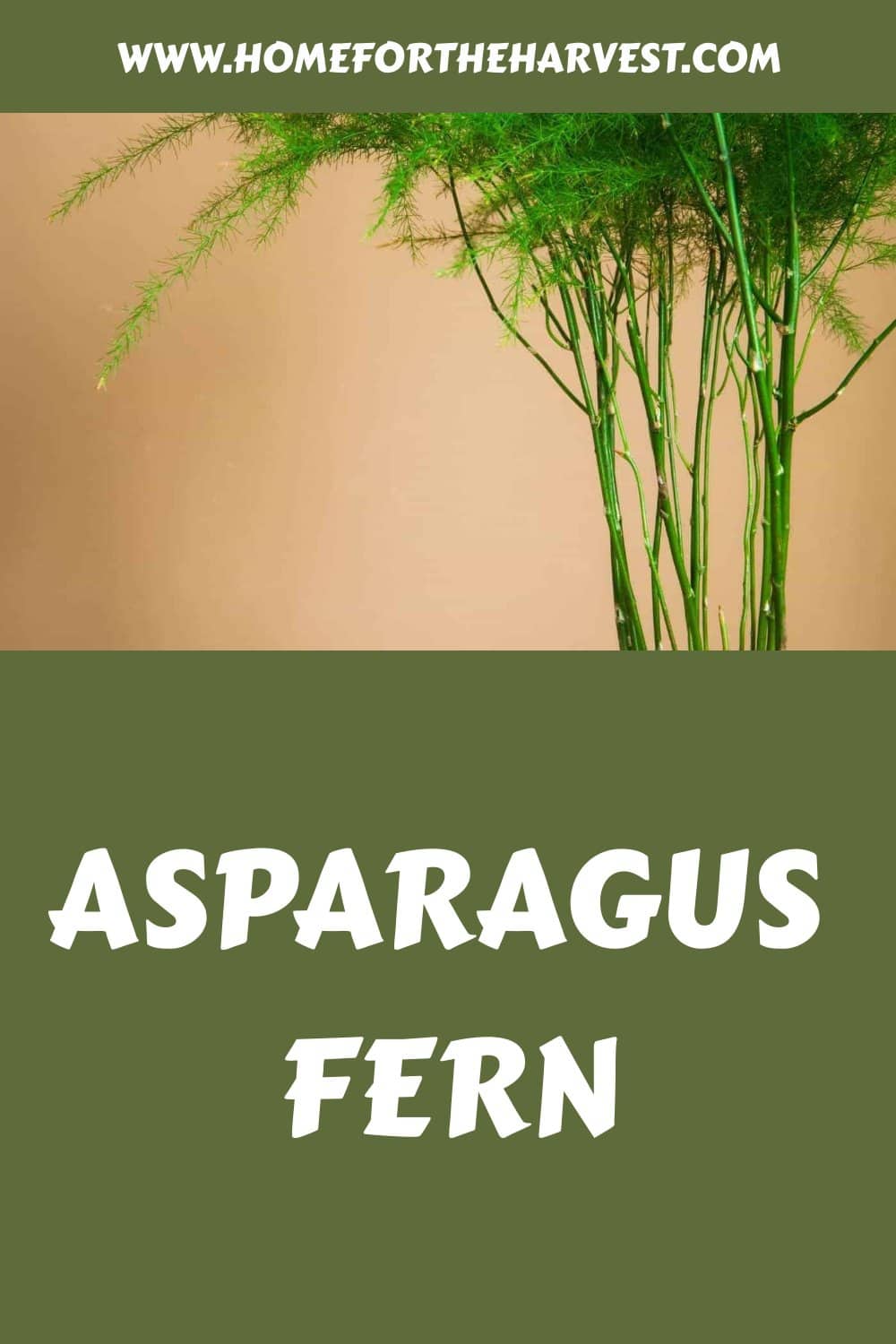Asparagus Fern is becoming a sought-after houseplant due to its graceful foliage and easy plant care requirements. There’s good reason that this plant is catching on as a must-have plant!
The Asparagus Fern (Asparagus setaceus) is an ornamental plant in the Asparagus family grown for its delicate fern-like foliage. While this plant is not a true fern, it certainly embodies the ethereal appeal of classic ferns. Unlike true ferns however, this plant blooms annually with attractive tiny white flowers. Asparagus Ferns are typically low-maintenance houseplants with average care requirements.
Read on to learn all about Asparagus Fern and how best to care for this wonderful plant.
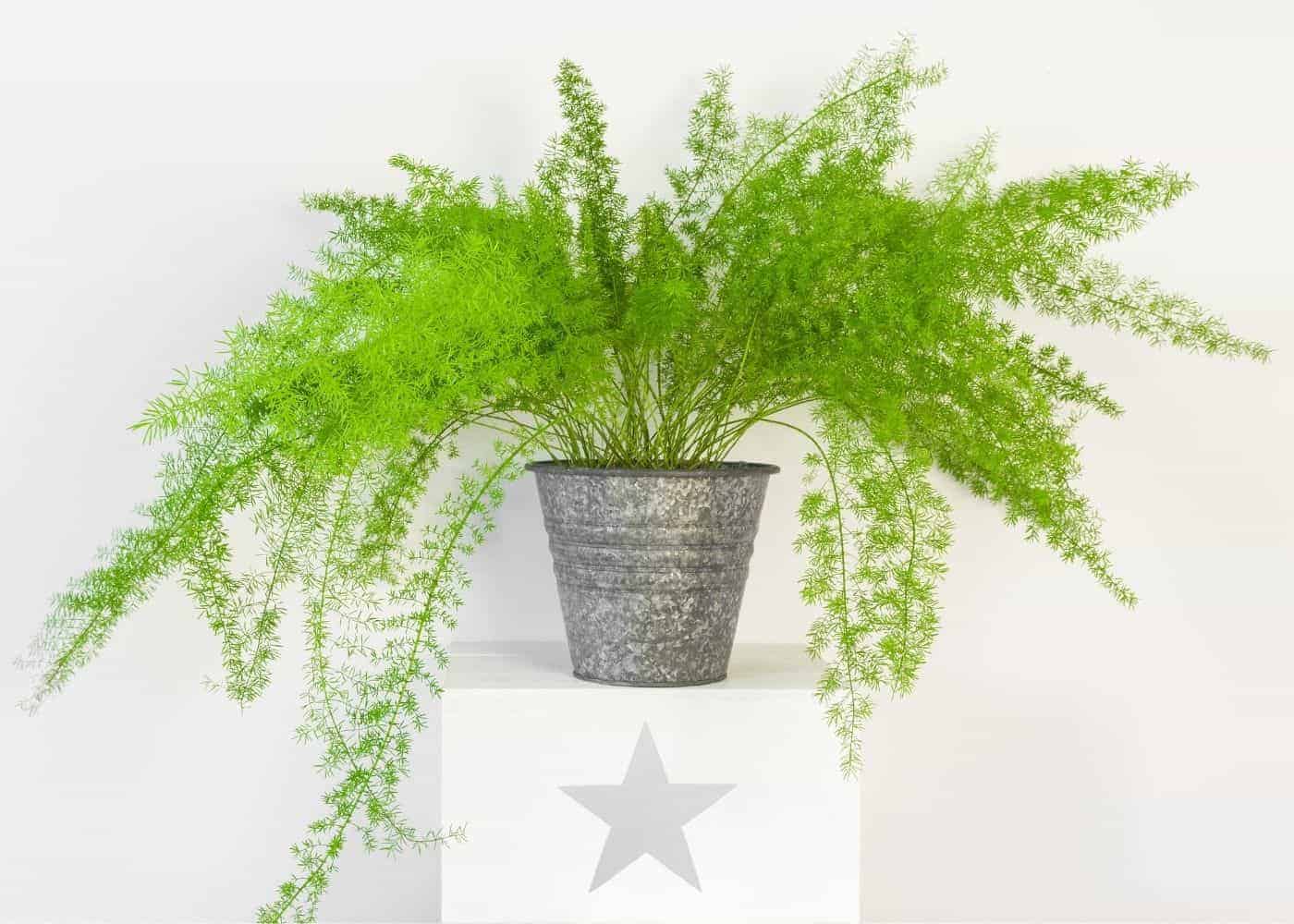
Asparagus fern basics
The Asparagus Fern, otherwise known as Asparagus setaceus, is originally from southern Africa. It is really easy to grow and is a popular type of plant for households. Although they look like ferns, they are actually in the Asparagus family.
Asparagus Ferns grow quickly, but don’t need a lot of maintenance in order to thrive. They do need to be repotted when the roots start to lift the dirt up, but they will continue to grow until their roots become bound.
Asparagus Ferns grow to be 18 inches to 3 feet wide, and white flowers bloom during the fall and summer months. Asparagus Ferns look like wiry shrubs and have bright green, needle-like leaves and flat stems.
Types of Asparagus fern
While most Asparagus Fern plants are Asparagus setaceus, there are some other species of fern-like plants in the Asparagus family that are also commonly called Asparagus Fern. Here is a list of different Asparagus Fern plants:
Popular Types of Asparagus Fern:
- Common Asparagus Fern/Plumosa Fern (Asparagus setaceus)
- Foxtail Fern/Sprenger’s Asparagus Fern (Asparagus aethiopicus)
- Foxtail Fern/Plume Asparagus (Asparagus densiflorus)
- Tree Fern/Tiki Fern (Asparagus virgatus)

Light requirements for Asparagus fern
Asparagus Ferns thrive in indirect sunlight and sometimes in partial shade. If an Asparagus Fern gets too much direct sunlight, the needles will turn yellow and drop off of the plant. If the needles of your Asparagus Fern are starting to turn yellow, move it away from the window and give it a break from direct sunlight. Instead, put it in a slightly shady area. It should turn green again soon.
Plants grown indoors tend to benefit from supplemental artificial light in all but the very brightest homes. A single plant can be energized with an inexpensive plant light. LED’s are the most popular.
Asparagus Ferns are surprisingly adaptable and will thrive even with partial sun or partial shade. As long as they get some sunlight daily, they will thrive and grow quickly.
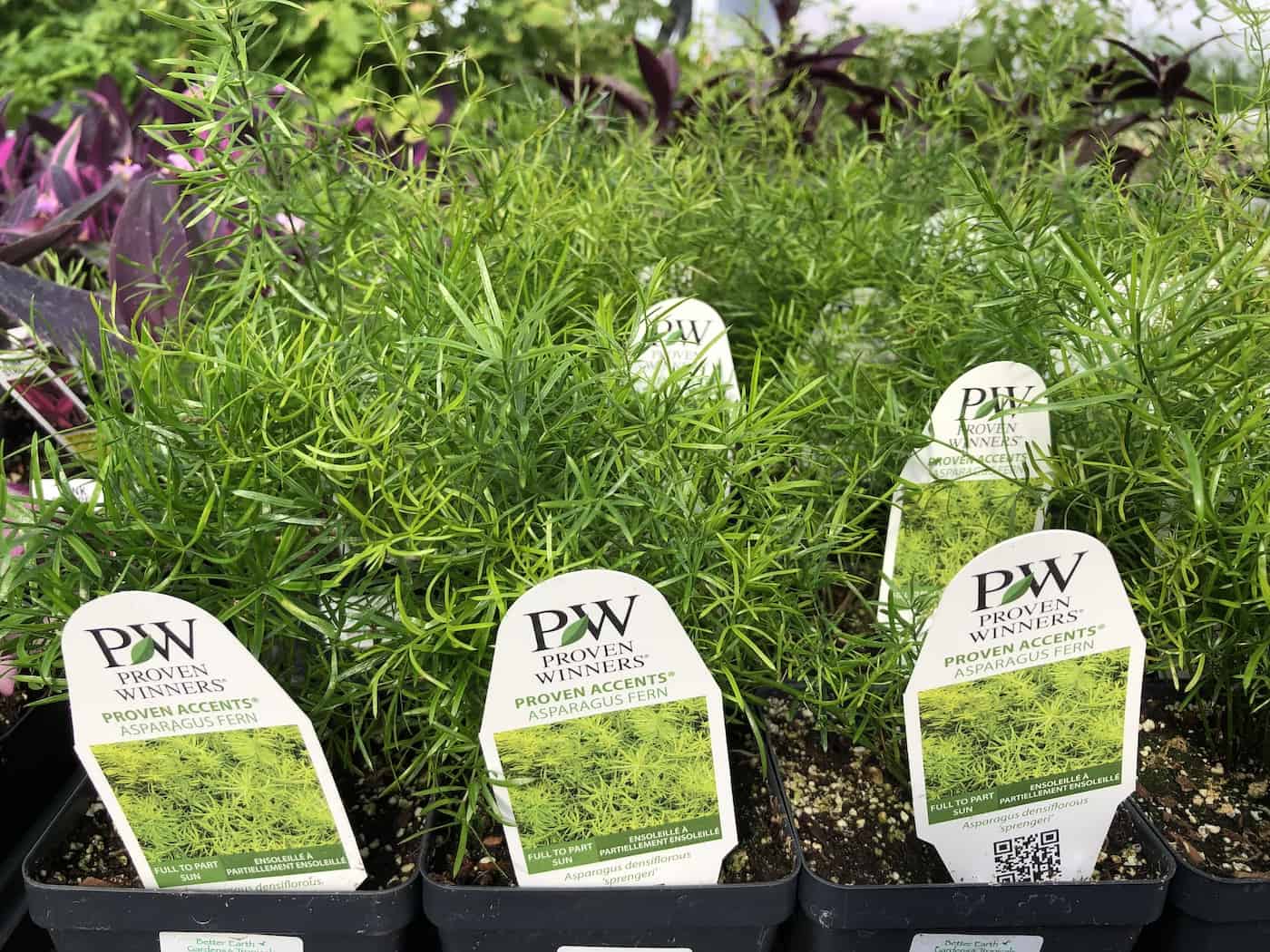
Watering asparagus ferns
Asparagus Ferns need to be watered about once a week. Established plants can become slightly drought resistant, but still should be watered when the topsoil is completely dry. Make sure you water it until the soil is moist and check to make sure excess water is draining out of the soil.
Try to keep the fronds of the Asparagus Fern dry when watering the plant. While the plant may benefit from a “plant shower” once in a while, frequent moisture on the foliage can encourage fungal disease. Use a watering can with a skinny spout to water the soil surface directly without wetting the fronds. If your Asparagus Fern isn’t getting enough water, the fronds will start to turn brown and the needles may begin to fall off.
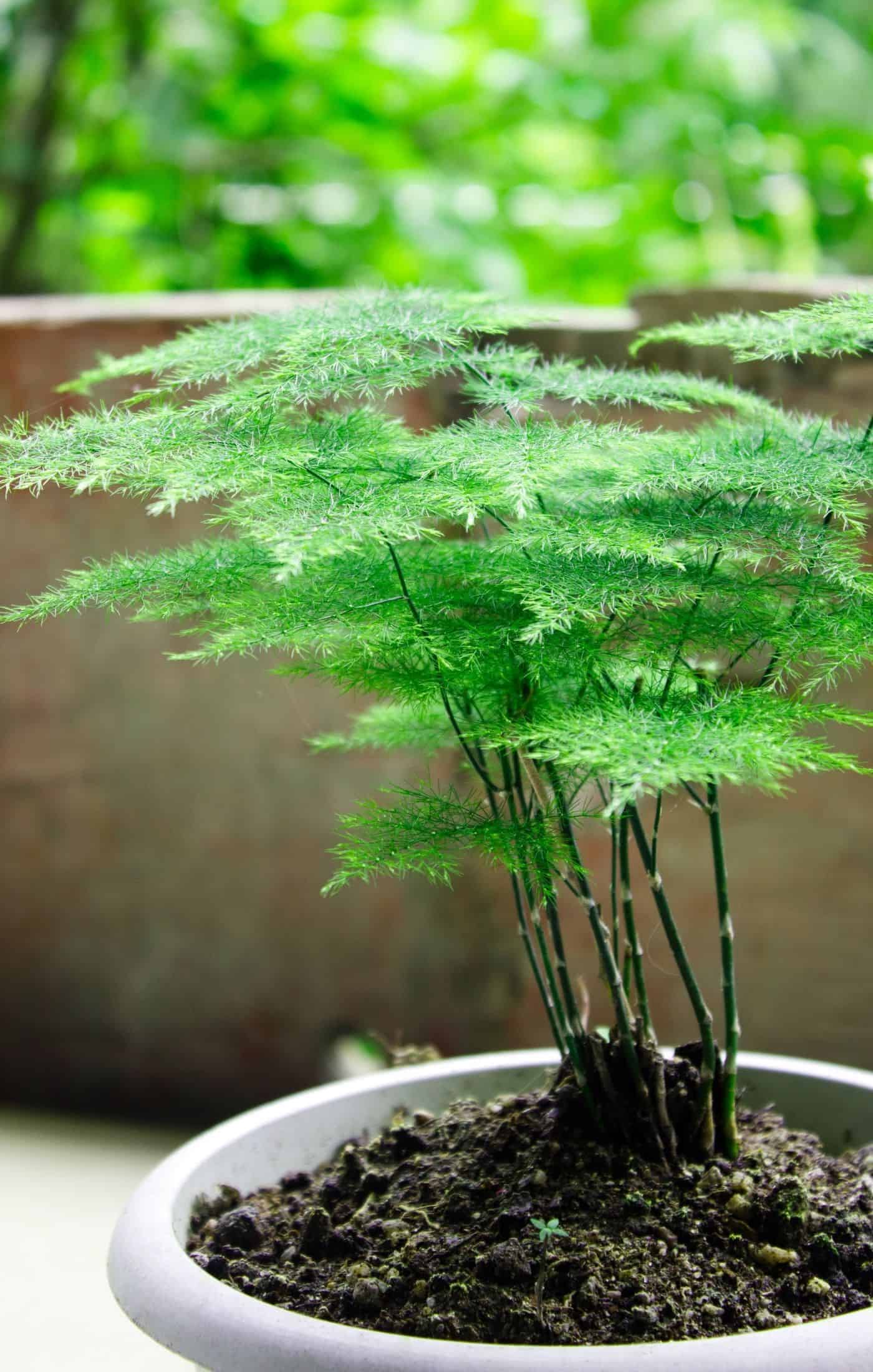
Ambient temperature for asparagus ferns
Asparagus Ferns thrive in temperatures between 70-80 degrees Fahrenheit. They will also grow in high temperatures if they are given enough water. Asparagus Ferns will slowly grow when the temperature drops below 55 degrees Fahrenheit, but they will grow much slower than normal and won’t need to be watered as frequently.
Indoor humidity for asparagus ferns
Asparagus Ferns thrive when the humidity is high and the air is moist. If your plant looks yellow or brown, get a humidifier and place it in the same room as your asparagus fern. You can use a regular mist humidifier or opt for a whole-house HVAC humidifier. Pebble trays under the plant tend to be ineffective in raising humidity for the plant.
Potting mix for asparagus ferns
Asparagus ferns prefer soil that is slightly acidic and well-draining. Any fresh, new soil mixture with perlite or pumice in it will typically work, but the best type of potting soil for Asparagus Ferns is a high-quality organic potting mix formulated for potted houseplants.
Planter pots for asparagus fern
Asparagus Ferns thrive in planter pots as long as they have drainage holes in the bottom and the potting soil is well-draining. You may need to get large planter pots as it grows so the roots don’t form a tight ball, as your plant won’t grow well if it has developed a root ball.
Fertilizing asparagus fern plants
Asparagus Ferns grown in containers require supplemental feeding of plant nutrients as they are isolated from their natural ecosystem. Both slow-release and faster-acting water-soluble products can work well. Look for a product formulated for potted plants and apply it according to the instrucitons.
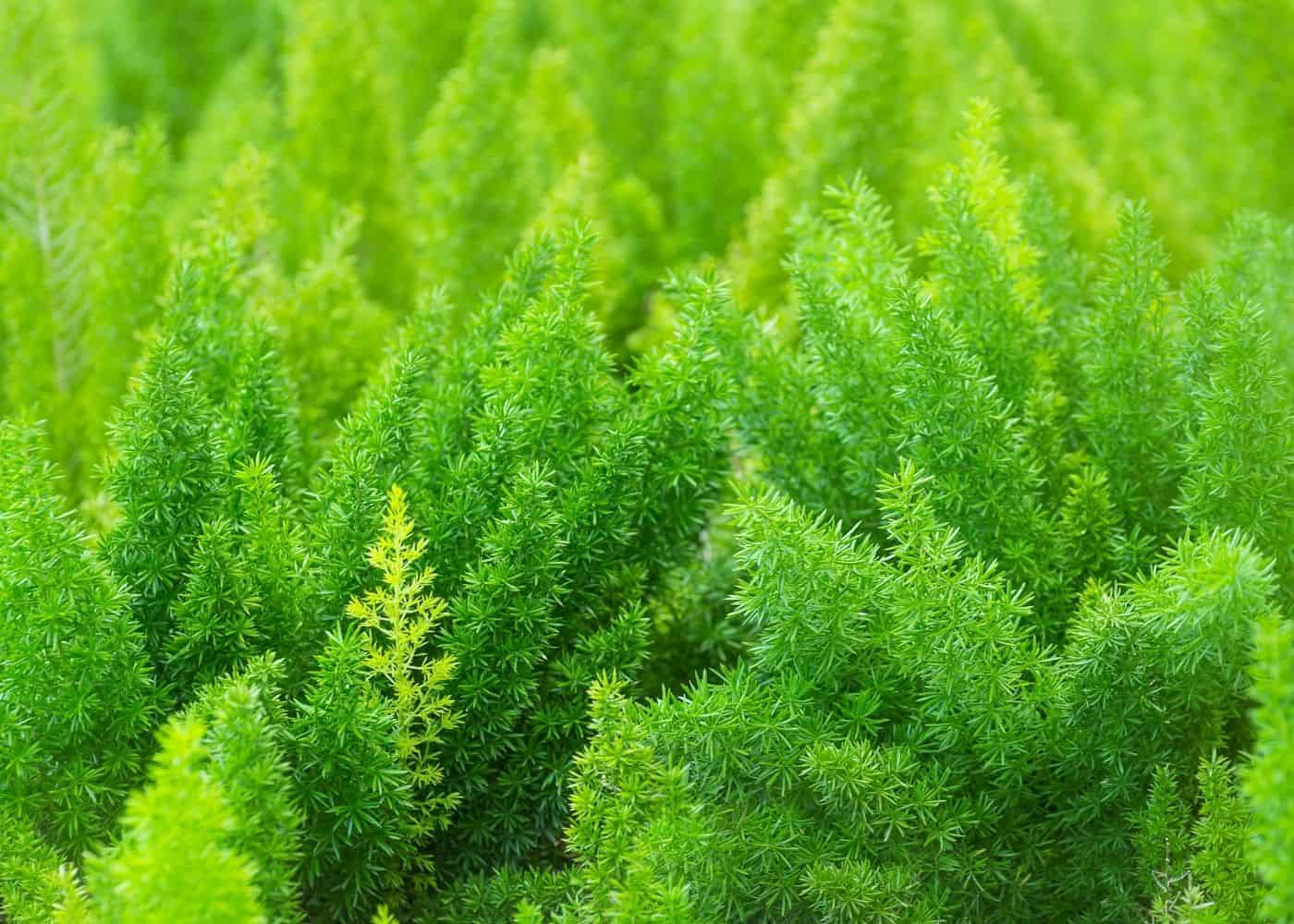
Common pests that affect asparagus fern
Asparagus Ferns are quite pest and disease resistant. They are also very resistant to damage from deer, so you won’t see any of them if you decide to plant an asparagus fern in your home garden or in a pot on the patio.
Asparagus ferns are susceptible to the following pests:
- Mealybugs
- Spider Mites
- Scale insects
If you want to prevent any pests from affecting your asparagus fern, spray a gentle organic pesticide on it periodically. You may want to do this when you repot your Asparagus Fern, when you add fertilizer to the soil, and/or after bringing it inside after a patio plant vacation.
Common diseases that affect asparagus fern
Asparagus ferns are susceptible to the following diseases:
- Leaf tip burn
- Nematodes
- Pythium root rot
If your asparagus fern has leaf tip burn, the edges and tips of the needles will start to turn brown and eventually fall off. If your asparagus fern has Nematodes, the needles will start to turn gray and the entire plant will start to wilt. This occurs when the roots start to rot, and it will cause your plant to die. Finally, if your asparagus fern has Pythium root rot, the needles will turn gray or yellow and the plant will wilt. The roots will also look brown and like they are rotting.
Start treatment by moving the plant to an area with good air circulation and lower air humidity. Then use a natural fungicide to treat the plant for the disease.


